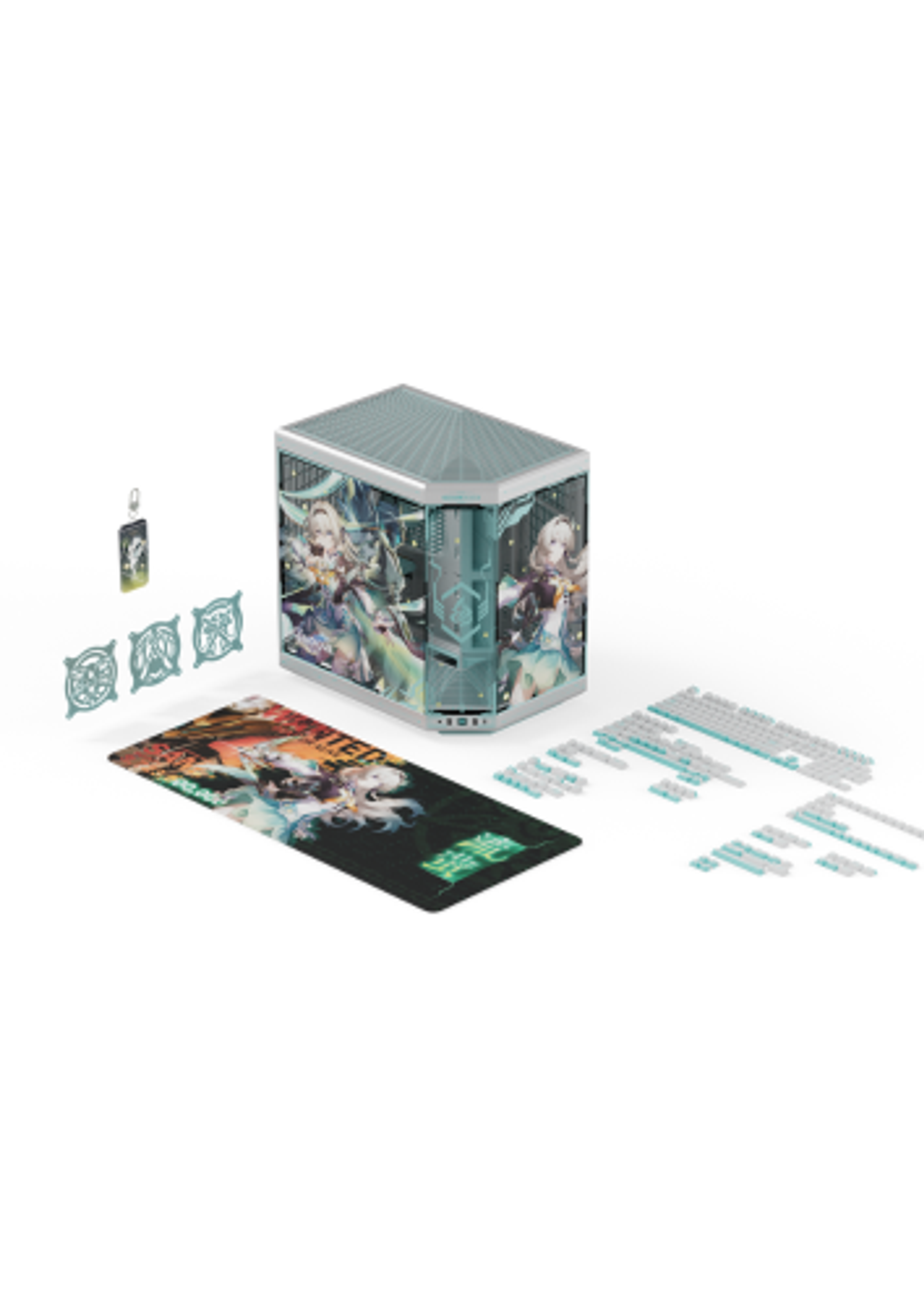
What is Refresh Rate and Why Does it Matter?
What is Refresh Rate and Why Does it Matter?
When shopping for a monitor or TV, refresh rate is often thrown around, so any PC builder must understand what it means. Measured in Hertz (Hz), refresh rate is the amount of times per second a display updates the image on screen. A higher refresh rate results in smoother visuals, reducing motion blur and improving responsiveness.
For gamers, a high refresh rate can distinguish between landing a precise shot or missing due to input lag. Even for everyday users, a higher refresh rate brings a more comfortable and pleasing experience, especially when scrolling or watching videos. This guide breaks down refresh rates and shows you how to choose the right one for your needs.
What is Refresh Rate on a Monitor?
Refresh rate is the amount of times per second a display updates the image on screen, which is measured in Hertz (Hz). It determines how smoothly visuals appear, with higher refresh rates providing a more fluid experience.
While refresh rate is often confused with frame rate (FPS), they are two distinct measurements. Refresh rate pertains to the display's ability to redraw images, while frame rate depends on the rendered content.
Typical refresh rates include 60Hz, 120Hz, 144Hz, 240Hz, and even 360Hz, with higher values offering improved responsiveness and reduced motion blur, which is beneficial for gaming and high-performance applications.
Why Does Refresh Rate Matter?
Refresh rate is crucial in a display's smoothness and responsiveness. Whether gaming, video editing, or web browsing, a higher refresh rate can improve the visual experience by reducing motion blur and improving clarity.
Understanding why refresh rate matters can help you choose the right display for optimal performance.
Gaming Performance
For gamers, refresh rate directly impacts performance and responsiveness. A higher gaming refresh rate allows for smoother motion, reducing motion blur and making fast-paced games feel more fluid. This benefit is significant in competitive genres like first-person shooters (FPS), racing games, and battle royales.
One of the most significant advantages of a high gaming refresh rate is reduced input lag, meaning actions like aiming, shooting, or maneuvering happen more in sync with what's on screen. For example, a 144Hz or 240Hz monitor refreshes the image more frequently than a standard 60Hz display, giving players more up-to-date visual information. This gaming refresh rate can improve aiming precision and reaction times, making tracking moving targets easier and responding to enemy movements faster.
By combining a high refresh rate with a powerful GPU that delivers high frame rates, gamers can maximize smoothness and responsiveness, giving them a competitive edge. Whether you're landing precise headshots in an FPS or making split-second turns in a racing game, a higher gaming refresh rate significantly enhances your gameplay.

What is a Good Refresh Rate for Gaming?
Choosing the right gaming refresh rate depends on your play style, hardware, and performance expectations. While a higher refresh rate generally leads to smoother gameplay, a good gaming refresh rate varies based on individual needs and system capabilities.
- 60Hz: The baseline refresh rate for gaming, suitable for casual players who don’t require ultra-smooth motion. While it’s acceptable for single-player and slower-paced games, competitive gamers may find it limiting.
- 120Hz: A solid choice for most gamers, 120Hz offers noticeably smoother motion than 60Hz and balances performance and affordability.
- 144Hz: The most popular among the refresh rates, 144Hz is the go-to option for most competitive and high-performance gamers.
- 180Hz–280Hz: These higher refresh rates cater to competitive gamers with high-end GPUs capable of pushing high frame rates.
- 240Hz and Above: Considered a premium option, 240Hz and higher offer ultra-smooth visuals favored by professional and esports-level players. However, a powerful GPU capable of delivering high frame rates is needed to take advantage of these refresh rates.
Ultimately, the best gaming refresh rate depends on your hardware and the types of games you play. Competitive gamers will benefit from higher refresh rates, while casual players may find 120Hz or 144Hz to be the perfect balance between performance and cost.
How does Refresh Rate Work?
Refresh rate is how often a display updates the onscreen image per second, while the time in between is measured in milliseconds (ms).
For example, a 144Hz monitor refreshes the image 144 times per second, contributing to smoother visuals when paired with high frame rates from the system's CPU and GPU. However, you can only utilize a monitor's refresh rate if the computer's hardware can generate enough frames per second (FPS). A high-refresh-rate monitor needs a fast CPU to process game instructions and a powerful GPU to render graphics efficiently. If the GPU can only produce 30 FPS, even a 144Hz monitor won't display its full potential, limiting the benefits of higher refresh rates.
Adaptive Sync Technologies
Adaptive Sync technology dynamically adjusts a monitor's refresh rate to match the GPU's frame rate output. This synchronization eliminates screen tearing and stuttering, improves overall visual quality, and smooths gameplay and content creation.
The most popular implementations of Adaptive Syncing are NVIDIA’s G-Sync and AMD’s FreeSync, which use the VESA Adaptive Syncing protocol but differ in cost, compatibility, and implementation.
While Vertical Sync (VSync) also prevents screen tearing, it differs from Adaptive Sync. VSync locks the frame rate to the monitor’s refresh rate, which can sometimes cause input lag or stuttering when frame rates fluctuate. On the other hand, Adaptive Sync adjusts the refresh rate in real time, providing a smoother and lag-free experience.

Do You Need a High Refresh Rate Monitor?
Whether you need a high-refresh-rate monitor depends on your computer use. While traditional 60Hz monitors are sufficient for everyday tasks, high-refresh-rate displays from 120Hz to 240Hz and beyond offer significant benefits for different users.
Users who benefit from higher refresh rates include:
- Gamers: Competitive players benefit the most from a high refresh rate, as smoother motion, reduced input lag, and improved response times enhance gameplay in fast-paced FPS, racing, and battle royale games.
- Professionals: When working with high-frame-rate content, video editors, animators, and designers can benefit from smoother visuals and clearer motion.
- General Users: While casual users may not need a high refresh rate, it can improve everyday activities like web browsing and scrolling by making animations more fluid.
Ultimately, if you're a gamer looking for an edge in competitive play, a monitor with a refresh rate of 144Hz or higher is a game-changer. However, depending on your needs and budget, a 60Hz or 120Hz display may still be sufficient for general computing and casual gaming.
How to Choose the Right Monitor
The refresh rate determines the smoothness and responsiveness of your display, making it essential for gamers. A higher refresh rate reduces motion blur, enhances responsiveness, and improves overall visual clarity in fast-paced gaming.
If you want to elevate your gaming setup, check out HYTE’s gaming accessories to complement your monitor and enhance your gaming experience. Whether you need a sleek PC case or the best cooling fans, HYTE has the gear to help you play at your best.
Ausgewählte Beiträge

Black Friday Gaming Gear & PC Deals 2025
HYTE Black Friday sales are here, and we’re excited to share the amazing deals we’ll be offering this year! Our Black Friday sales event is your chance to save big on some of our most popular products. From November 20th through December 2nd, enjoy incredible discounts on PC cases and gaming accessories that bring both performance and style to your setup. If you’re looking to upgrade, now’s the perfect time to do it with HYTE.

Official HYTE x Honkai: Star Rail Firefly Collection!
The stars have aligned, and the Official HYTE x Honkai: Star Rail Firefly Collection is ready for launch.

HYTE's 4th Anniversary Sale!
We’ve come a long way, and it’s all thanks to you! To celebrate HYTE’s anniversary, we’re giving back with a limited-time Anniversary Sale from Oct. 5 to Oct. 7.

HYTE X50 & X50 Air Pre-Orders Are Now Live!
The X50 redefines typical PC cases with a unique curved design and performance-driven elements. Pre-order the X50 and X50 Air NOW!
